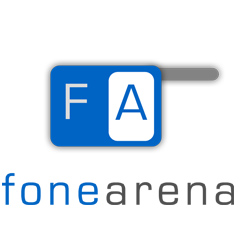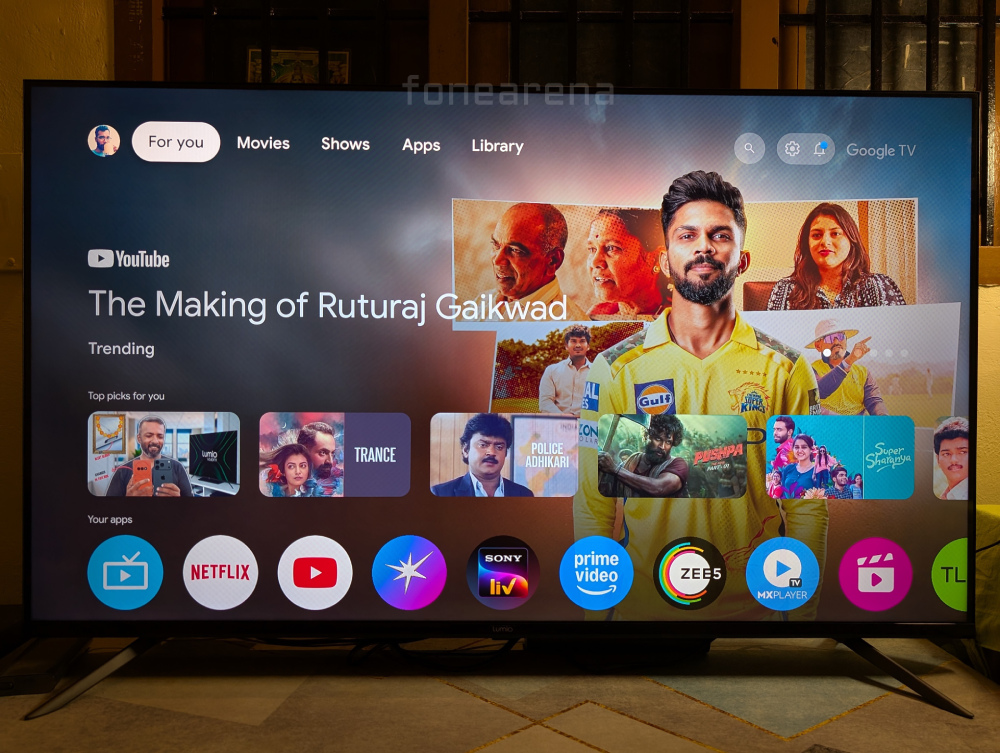
We’ve all been there – waiting patiently (or impatiently) as our supposedly “smart” TV takes its sweet time booting up, sluggishly navigating menus, or buffering endlessly while trying to launch an app. For far too long, the Smart TV experience, especially outside the premium tier, has felt like a compromise, lagging significantly behind the fluid responsiveness we demand from our smartphones. Lumio, a new brand from Circuit House Technologies, enters the Indian market with a bold claim: to fix slow TVs. Their Vision series, positioned as “flagship killers,” promises speed, optimization, and a user experience that doesn’t test your patience.
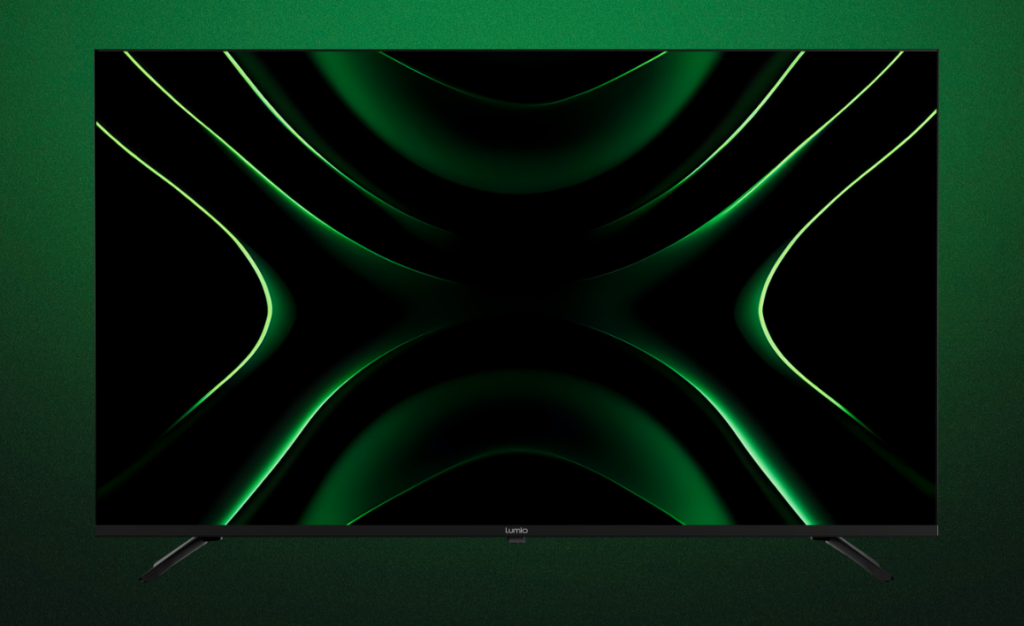
We received the Lumio Vision 7 50-inch 4K QLED TV for review, a model squarely aimed at the competitive mid-range segment. Priced at ₹34,999 at launch, it boasts a QLED panel, a supposedly powerful “BOSS Flagship Processor” with 3GB of RAM, Google TV, and unique features like the TLDR content dashboard. But does it live up to the hype? Can it truly offer a smooth, frustration-free experience that challenges the status quo? Let’s dive deep into our hands-on experience.
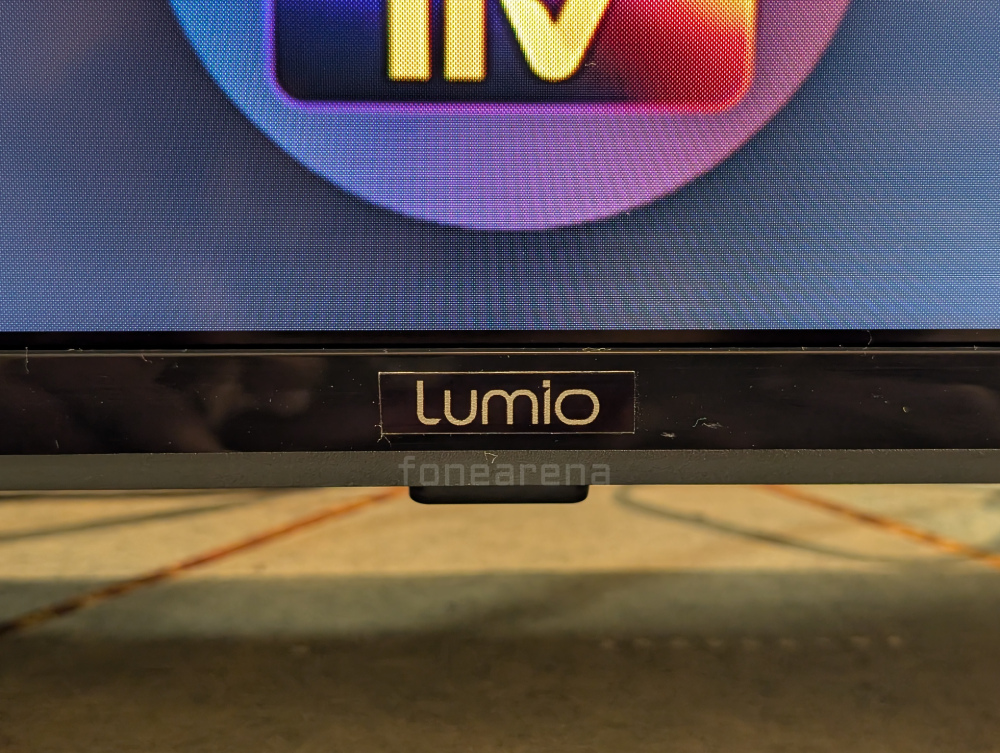
Meet Lumio: A New Brand with a Mission
Before we get into the TV itself, who exactly is Lumio? They are a fresh face in the Indian consumer tech scene, launched by Circuit House Technologies, a company founded just a year ago with the ambitious goal of building India’s next-generation tech brand. Their mission, as stated in their guide, isn’t just to make products, but to “challenge the status quo, reimagine home entertainment, and create products that spark joy.”

So, why start with TVs? Lumio highlights a crucial pain point many of us have felt. After analyzing a staggering 50,000 user reviews, they found that a majority (66%) were unhappy with their TV’s performance, citing laggy interfaces and slow app launches as major frustrations. The device meant to be the centerpiece of entertainment was often causing annoyance. Lumio believes TVs slow down because software evolves faster than the hardware, leading to limitations in storage, RAM, and processing power over time. Their stated approach with the Vision series is different: focus on high-performance hardware, smart software optimization (working closely with Google), and a relentless focus on speed, aiming to build TVs that stay fast not just today, but for the long run. It’s a compelling mission statement that sets high expectations for the Vision 7.
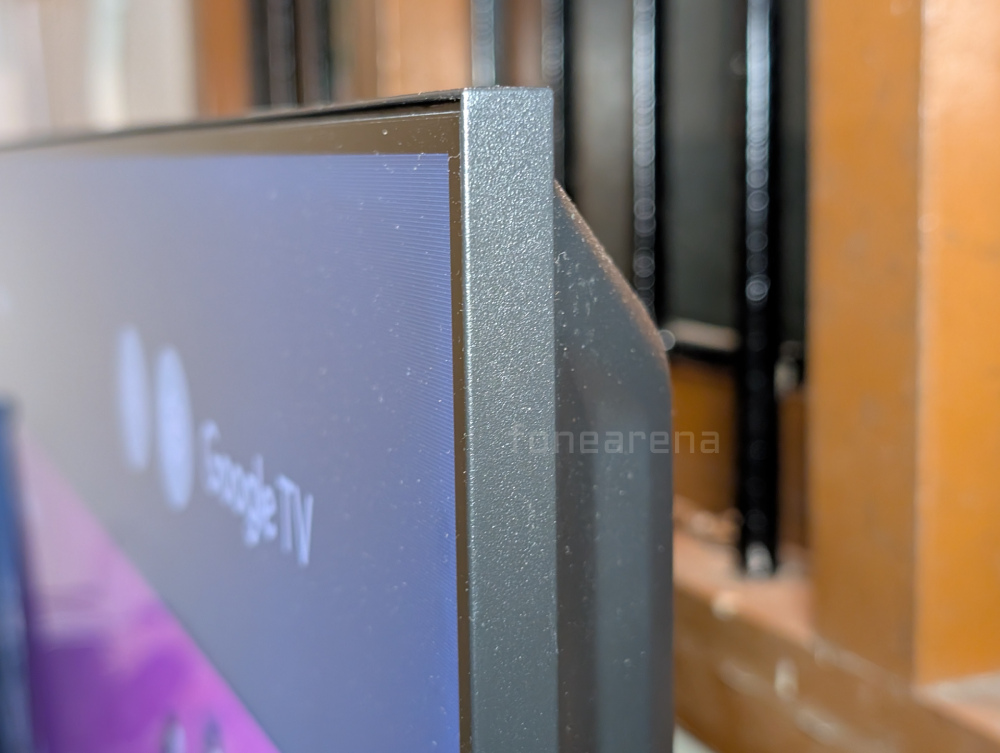
Design and Build Quality: Surprisingly Premium
First impressions matter, and the Lumio Vision 7 makes a strong one, largely exceeding expectations for its price bracket. While constructed primarily from plastic, it utilizes high-quality materials that feel surprisingly solid and sturdy. There’s none of the creakiness or excessive flex sometimes found on budget TVs. It gives off a genuinely premium vibe, suggesting Lumio hasn’t cut corners on the physical construction.
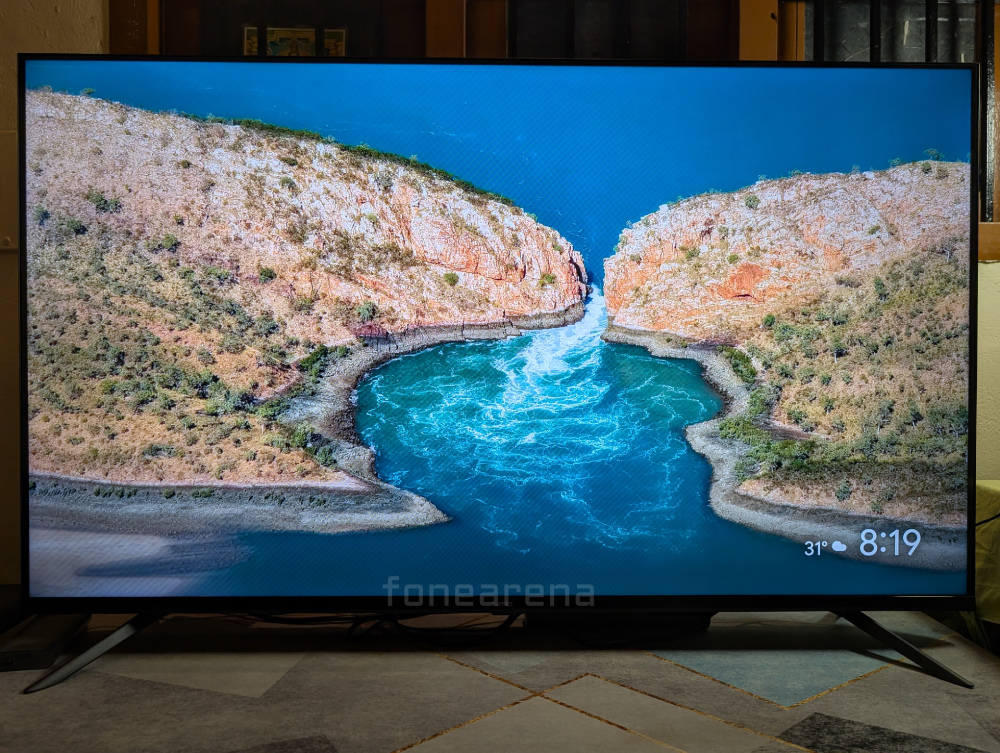
The design itself is clean and modern, characterized by very minimal bezels on three sides, allowing the picture to dominate and providing an immersive viewing experience. One particularly thoughtful touch is the design of the back panel – it looks clean and considered, an area often overlooked. Even more impressive is the I/O port area; instead of the usual black plastic recess where finding ports requires a flashlight, Lumio has used a reflective film or plate. This simple addition makes the ports easily visible even in low light – a fantastic, user-friendly detail.
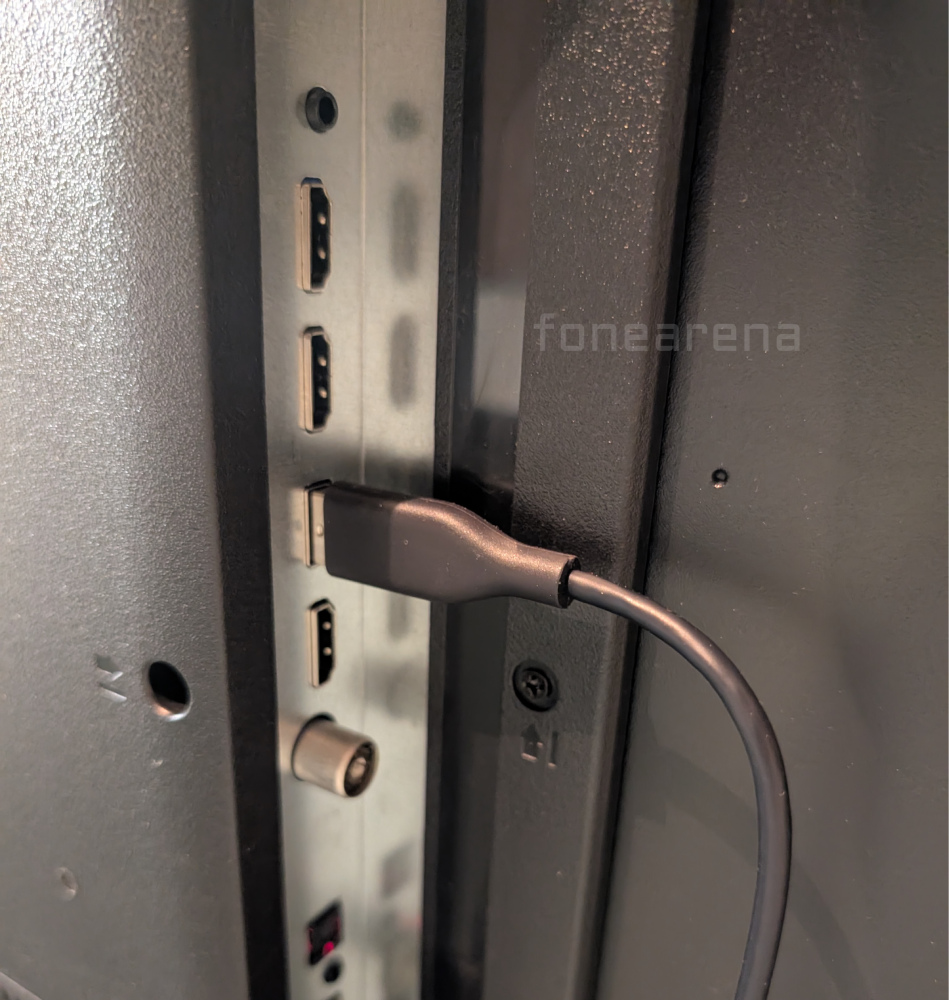
The TV rests on two feet-style stands which feel rigid and provide a very satisfactory solid base, more reassuring than many competitors. For this 50-inch model, they are spaced 99cm apart, requiring a reasonably wide table surface. While we didn’t test wall mounting (VESA support is confirmed, but a mount wasn’t provided), the easily visible ports suggest access shouldn’t be too difficult. Handling the TV during setup was also surprisingly manageable. Despite being a 50-inch panel, its 13.5kg weight (with stand) felt balanced, and one person could comfortably attach the stands, place it on a table, and even carry it up a flight of stairs. It doesn’t feel unwieldy, though larger screen sizes in the lineup would likely necessitate two people. Cable management is basic, relying on the flexibility offered by a detachable SMPS-style power cable rather than built-in clips or channels. Overall, the design and build quality punch above their weight, delivering a solid, premium-feeling package with thoughtful user-centric details.
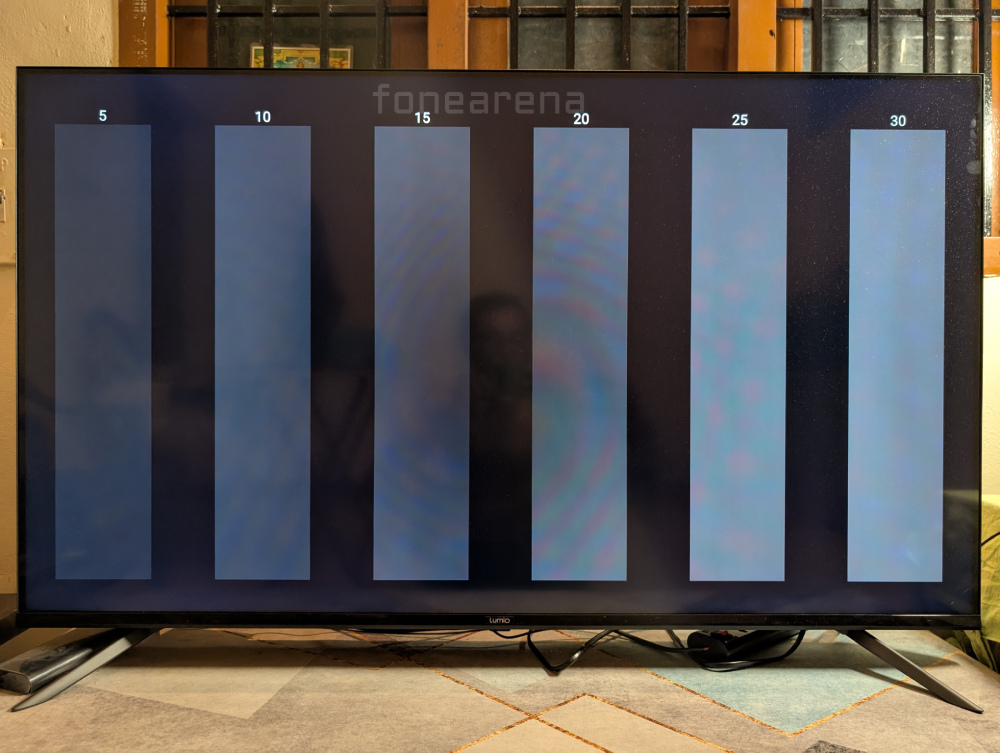
Display & Picture Quality: Capable QLED with Caveats
The Vision 7 boasts a 50-inch 4K UHD (3840×2160) QLED panel, utilizing a Quantum Dot layer over a standard Blue LED backlight. Out of the box, particularly in standard picture modes, the image quality is impressive for the price. Native 4K content appears sharp, detailed, and pleasingly contrasty. Colors, benefiting from the QLED technology and wide gamut coverage (claimed 114% DCI-P3 for the 50-inch), look vibrant yet natural, avoiding the oversaturation sometimes seen on lower-end panels. The TV supports Dolby Vision, HDR10, and HLG, and the HDR presentation is good, preserving detail well in highlights and shadows within the panel’s limits. It delivers a noticeable step up from SDR, offering a pleasant and balanced HDR experience, even if it lacks the retina-searing peak brightness or absolute blacks of high-end OLED or Mini-LED displays (like Lumio’s own Vision 9). For HDR enthusiasts seeking maximum impact, expectations should be tempered by the price point and the inherent capabilities of this panel technology (rated up to 400 nits).
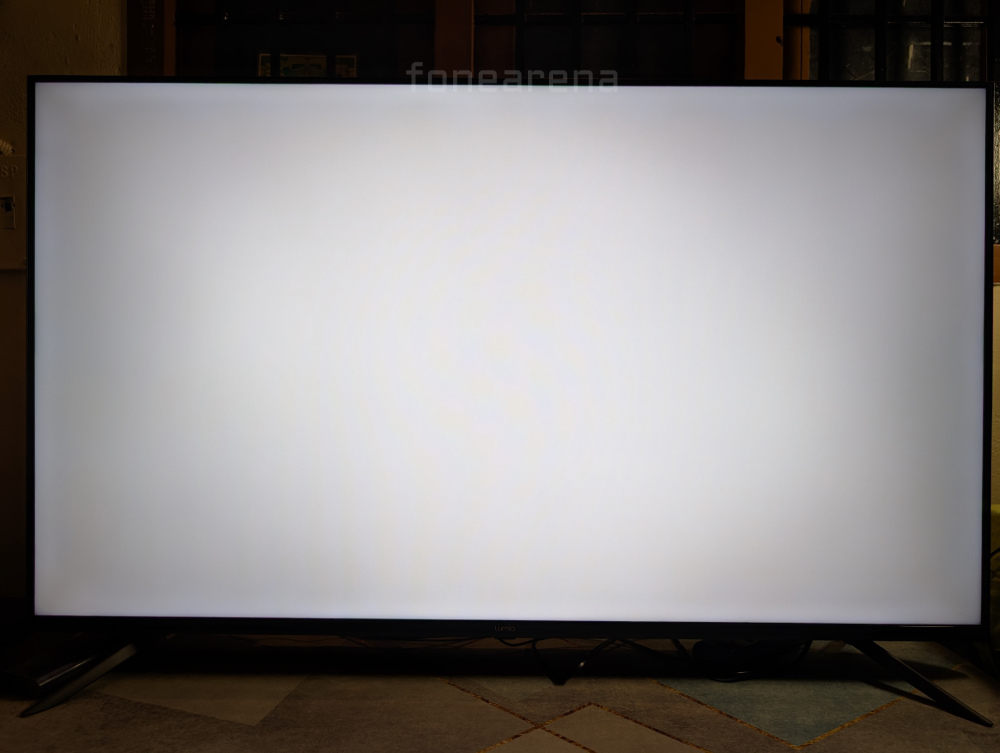
Brightness is sufficient to handle viewing in brightly lit rooms, where the picture remains easily watchable. The screen features a glossy finish, common on most TVs, but incorporates an effective anti-reflective layer. This doesn’t eliminate reflections entirely but diffuses them significantly, making them appear blurry and much less distracting than sharp mirror-like reflections, especially for light sources further away.
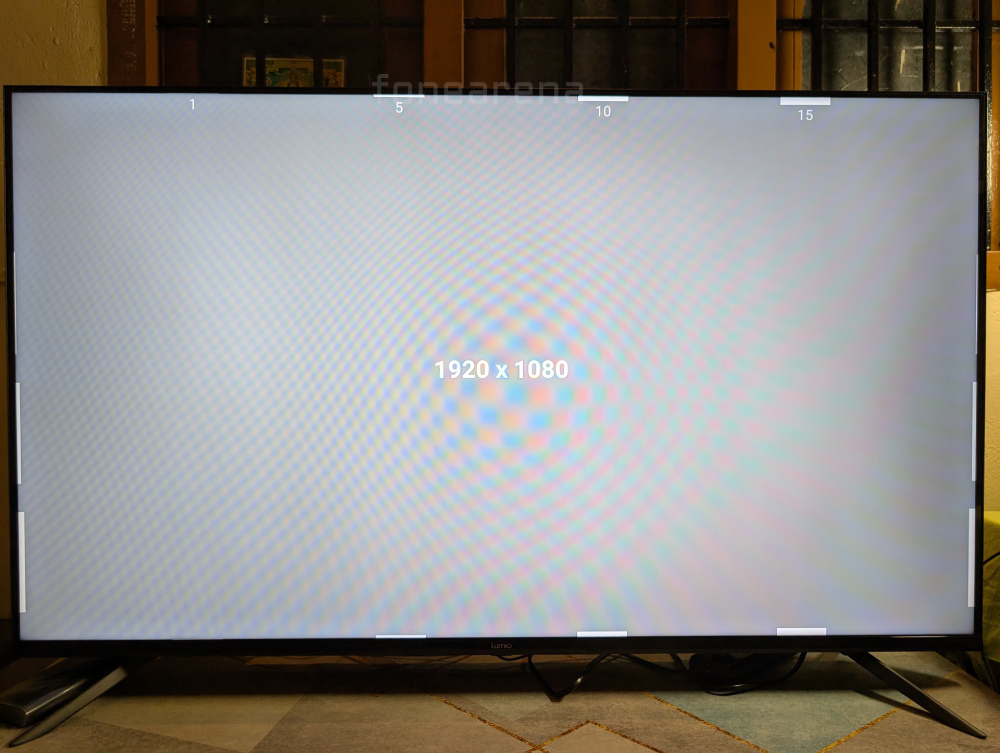
As expected from a standard QLED without local dimming, black levels aren’t perfect, appearing more as a very dark gray in completely black scenes. Contrast and color uniformity also visibly degrade when viewed from wider off-angles (beyond roughly 70 degrees off-center, or 140 degrees total), though brightness and sharpness hold up better. Head-on viewing provides the optimal experience. While the underlying backlight structure can sometimes be subtly perceived on uniform gray screens, especially off-axis, this is characteristic of the technology and wasn’t distracting during normal content viewing. Blooming around bright objects also wasn’t a significant issue.
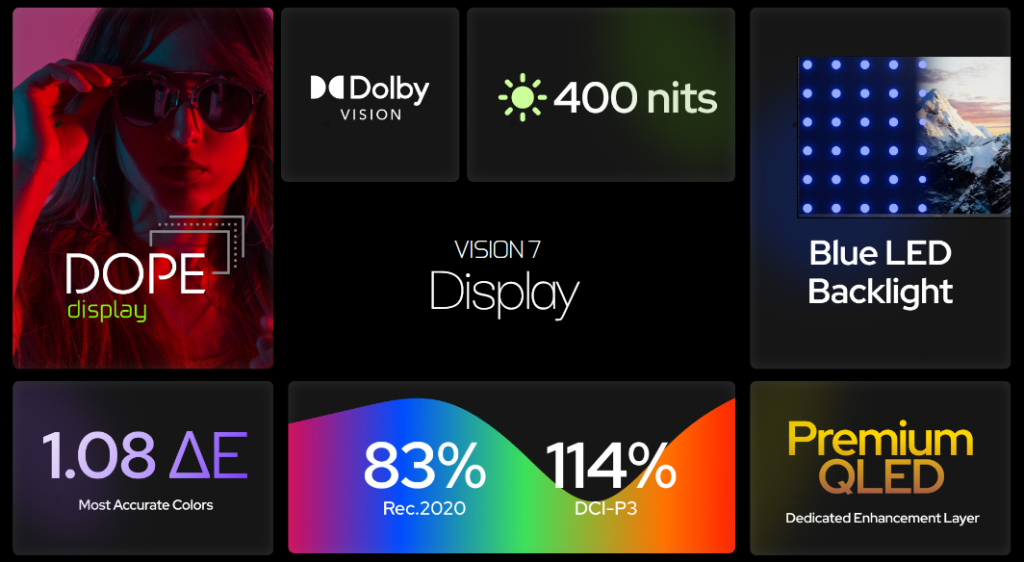
The DOPE Picture Engine handles upscaling surprisingly well. We watched 720p content on Netflix (like Oppenheimer), and it looked remarkably clear and sharp on the 4K panel, indicating effective processing that enhances detail without introducing excessive artificial sharpening. Lower-resolution content is certainly watchable and looks “good enough.” The panel’s native refresh rate is 60Hz. While this means no support for 120Hz gaming, motion handling for standard 50/60fps content (like IPL matches) appeared smooth and normal, without excessive judder or blur. MEMC (motion smoothing) is available and seems improved over older versions, but like most implementations, it can introduce the ‘soap opera effect’ and visible artifacts around very fast-moving objects (e.g., a cricket ball during a boundary shot). Most users, ourselves included, preferred disabling MEMC for the most natural look.
Overall, the Vision 7’s QLED panel delivers a high-quality picture for its price segment, with good brightness, vibrant colors, sharp 4K detail, and effective upscaling. Its main limitations are the standard 60Hz refresh rate and the typical off-angle viewing/black level performance of non-local dimming QLEDs.
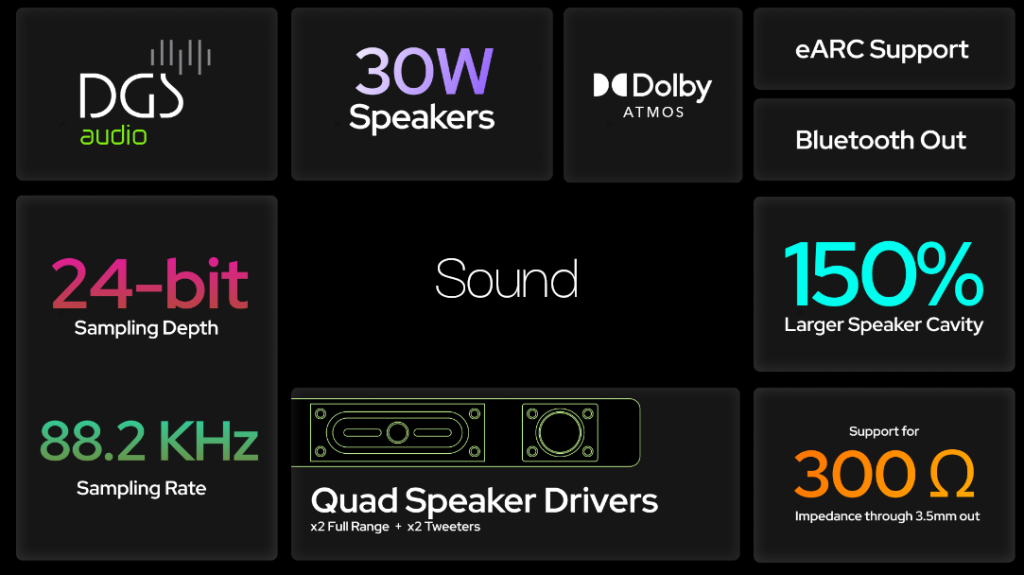
Audio Quality: Surprisingly Good, Bass Aside
Integrated TV audio is often an afterthought, but Lumio seems to have paid attention here. The 50-inch Vision 7 features a 30W quad-driver speaker system (2 tweeters + 2 full range) with “DGS Audio” tuning and support for Dolby Atmos. The results are surprisingly impressive.
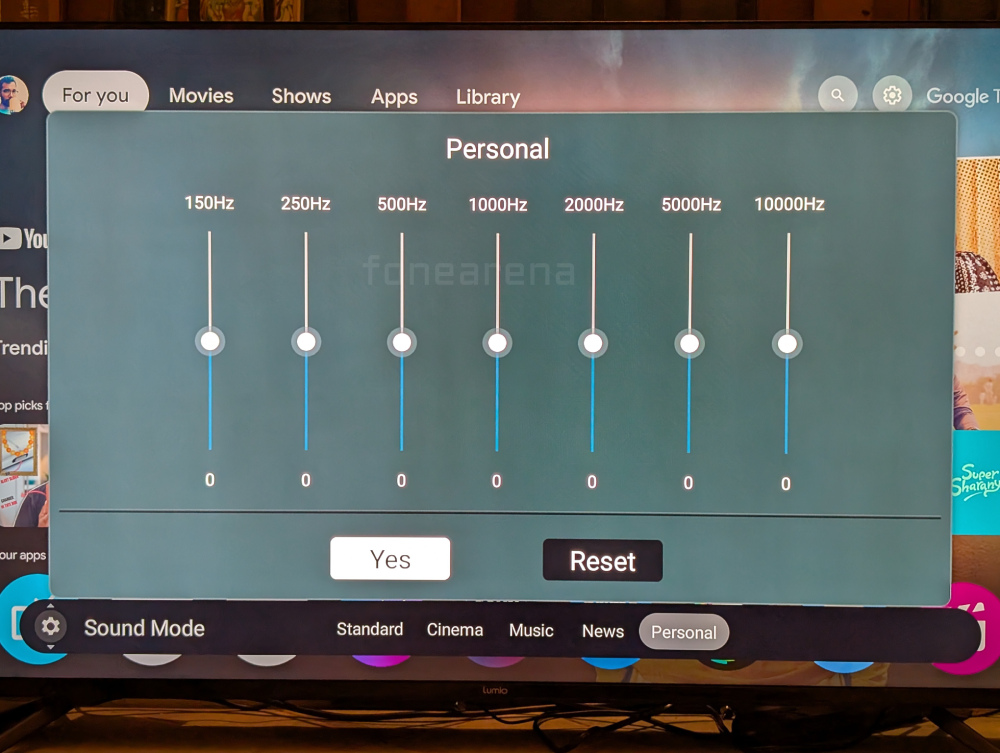
The most notable strength is clarity. Dialogue in movies and TV shows comes through clearly and distinctly, even at lower volumes. The overall sound signature is well-balanced across mids and highs, avoiding the tinny or muffled sound common on many TVs. It can also reach high volumes without noticeable distortion. In fact, the overall audio performance feels comparable to, or even better than, many mid-range soundbars, which is high praise for built-in speakers. Dolby Atmos processing adds a degree of spaciousness, though its effectiveness is dependent on the source content and room acoustics. We found that in a smaller room, disabling surround effects and using a custom EQ provided a more focused and preferable sound.
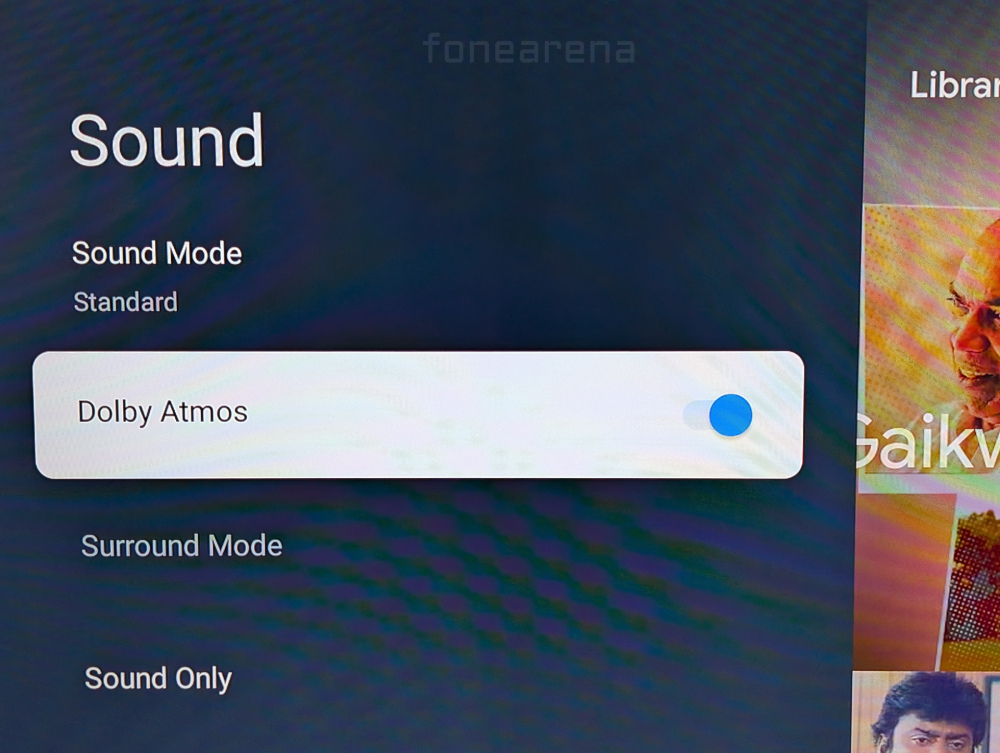
The main weakness, however, is the bass response. Low frequencies lack punch and impact, feeling subdued compared to the clear mids and highs, especially when listening to music. While adequate for casual viewing, the lack of deep bass means an external soundbar with a subwoofer is still recommended for users wanting a truly cinematic or immersive music experience. Thankfully, eARC support on HDMI 1 makes connecting such a system straightforward.
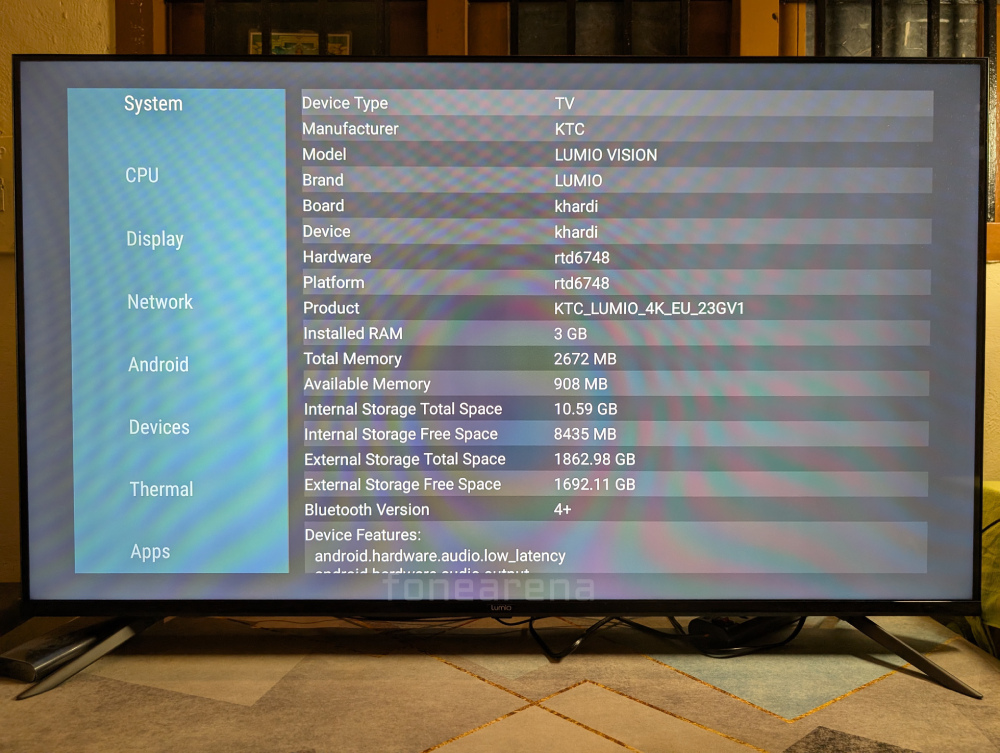
Smart TV Performance & Features: Speed is the Name of the Game
This is where Lumio makes its biggest claims, and largely delivers. The combination of the “BOSS Flagship Processor” and a generous 3GB of DDR4 RAM results in a remarkably smooth and responsive Google TV experience. Navigating the interface, scrolling through recommendations, opening apps, and switching between them feels fluid and snappy, a stark contrast to the lag often experienced on other TVs in this price range. The claim of being “2x faster” feels substantiated in real-world use – boot times are quick, and apps like Netflix load rapidly. The TV also wakes instantly from standby, adding to the seamless feel. This level of performance is comparable to flagship TVs and is a major strength.
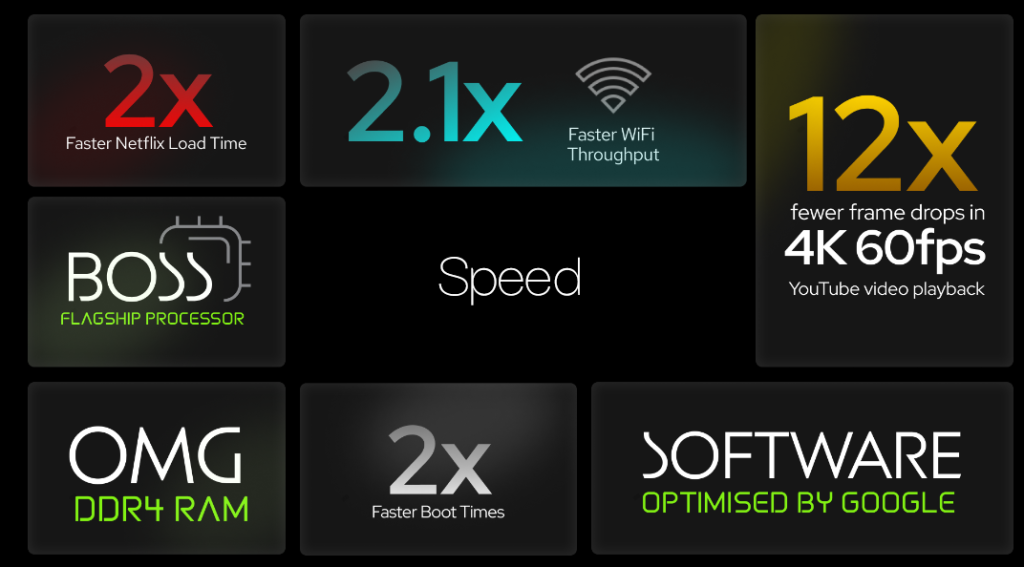
The Google TV operating system (based on Android 11) provides access to the vast Google Play Store ecosystem. Key Indian streaming apps like Netflix, Prime Video, Disney+ Hotstar, SonyLIV, ZEE5, and JioCinema all installed and ran without issues. The 16GB of internal storage proved sufficient for installing a good selection of essential apps.

Lumio’s custom TLDR dashboard offers a fresh approach to content discovery, currently focusing on Sports and Music. It presents recommendations and categories in an intuitive vertical-scrolling page layout with horizontal content cards, adhering to Lumio’s branding. It’s a smooth and visually pleasant interface, though its long-term utility will depend on how many content categories are added beyond the initial two. Google Assistant voice control, accessed via the remote’s microphone, worked really well, understanding commands accurately and responding quickly.
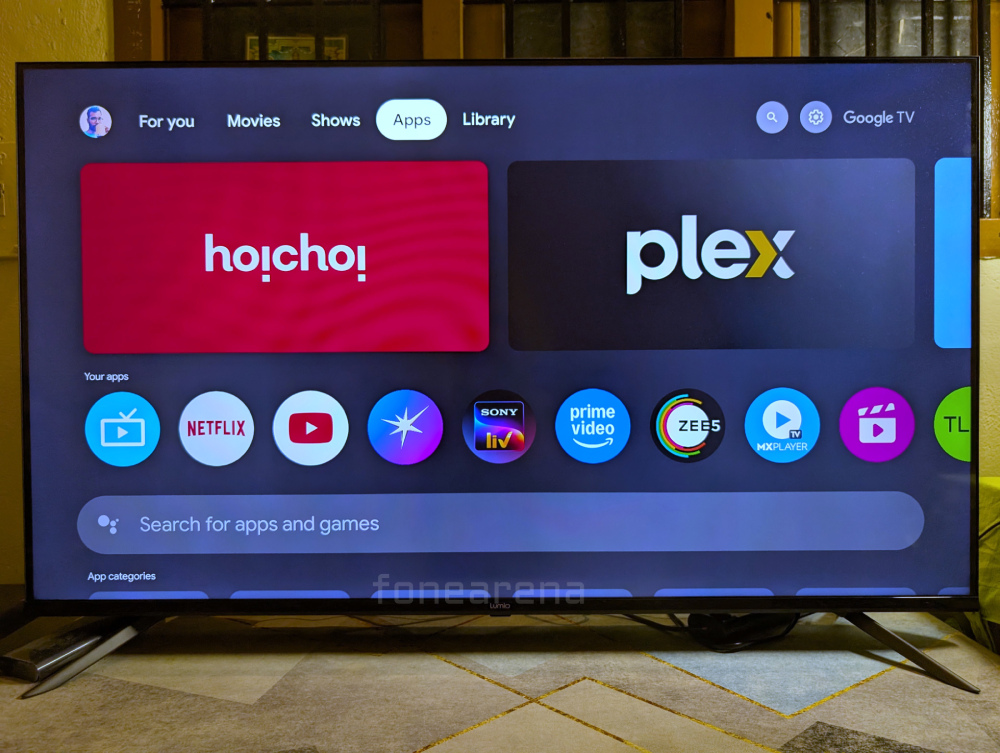
Other features like the DOPE picture engine, DGS audio tuning, and basic ambient modes function as expected. Lumio’s long-term software update policy commits to two letter upgrades and quarterly security patches. An update was provided during the review period. These TVs run on stock Google TV OS without any custom skin which means updates could come sooner.
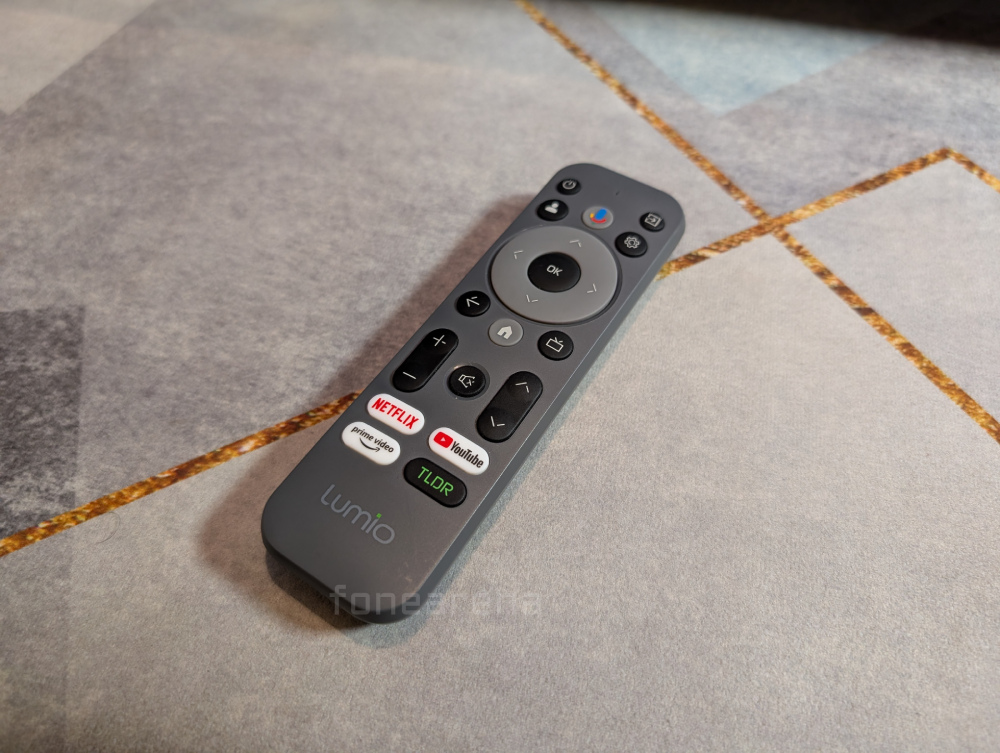
Remote Control: Small Size, Big Satisfaction
Often overlooked, the remote control (“Minion” remote) is another standout feature. It’s interestingly well-designed – compact, sleek, light, yet feeling sturdy thanks to high-quality plastics. The ergonomics are excellent, fitting comfortably in the hand. But the real highlight is the button feel, which is exceptional: tactile, smooth, yet grippy, providing satisfying feedback with each press.
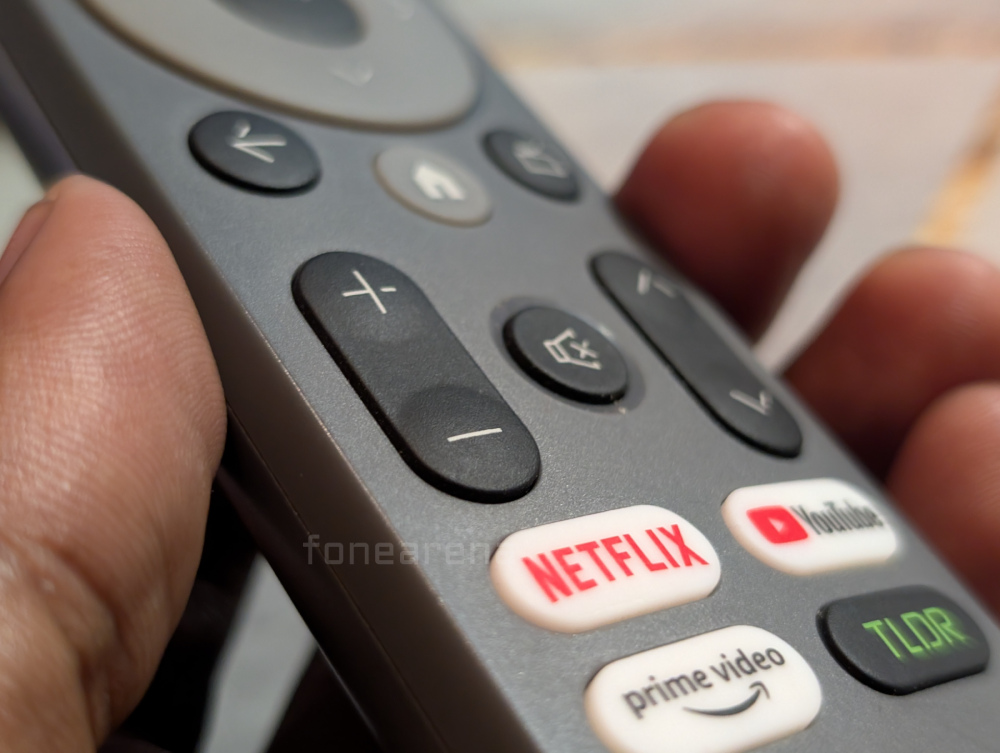
The remote uses both IR and Bluetooth, ensuring reliable operation without needing direct line-of-sight for most functions. The built-in microphone for Google Assistant works perfectly. It includes relevant shortcut buttons for the Indian market: Netflix, Prime Video, YouTube, and the custom TLDR button. While it lacks advanced features like a number pad, air mouse pointer, or solar charging, these omissions weren’t strongly felt, and the core experience of using this remote is highly satisfying due to its design and responsiveness.
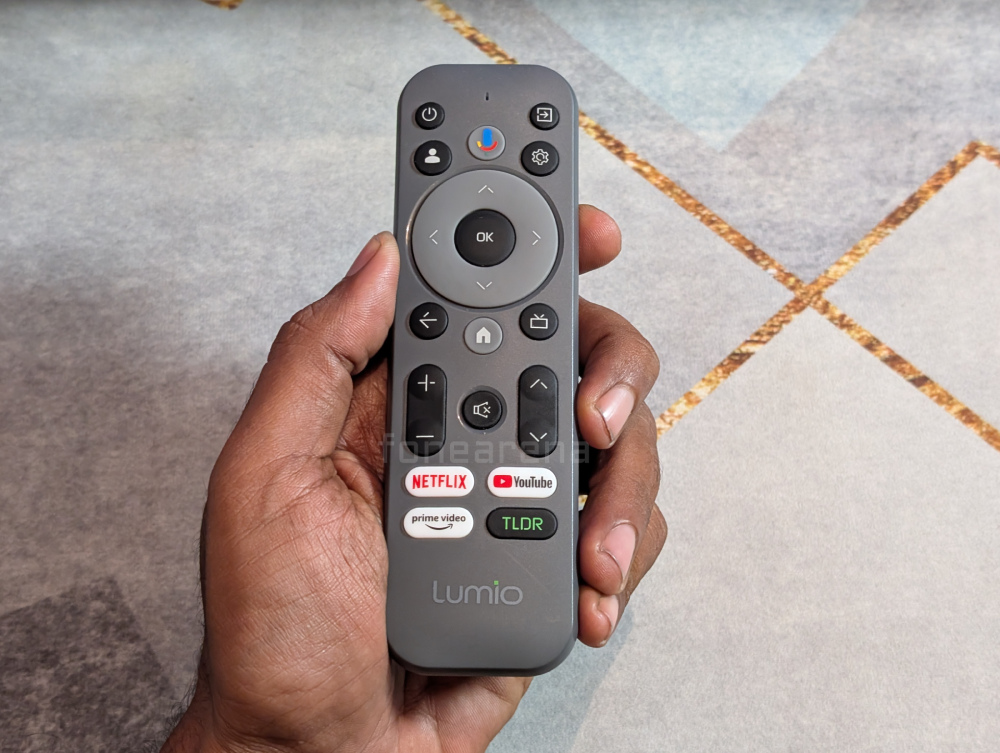
Gaming Features: Basic but Functional
The Lumio Vision 7 is not positioned as a high-end gaming TV, primarily due to its 60Hz panel. This limits gaming to a maximum of 60fps and means features like VRR (Variable Refresh Rate) are absent. However, it does support ALLM (Auto Low Latency Mode) via its HDMI 2.1 ports. In testing, ALLM worked effectively, automatically switching the TV to its lowest latency setting when a compatible console (like a PS5) was connected. Input lag felt noticeably high with Game Mode off, but vanished once Game Mode was enabled (either automatically via ALLM or manually when connecting a PC), providing a smooth and responsive feel suitable for casual and even more serious 60Hz gaming. HDR gaming is also supported via the WCG setting. There is no dedicated on-screen Game Bar for quick access to settings.
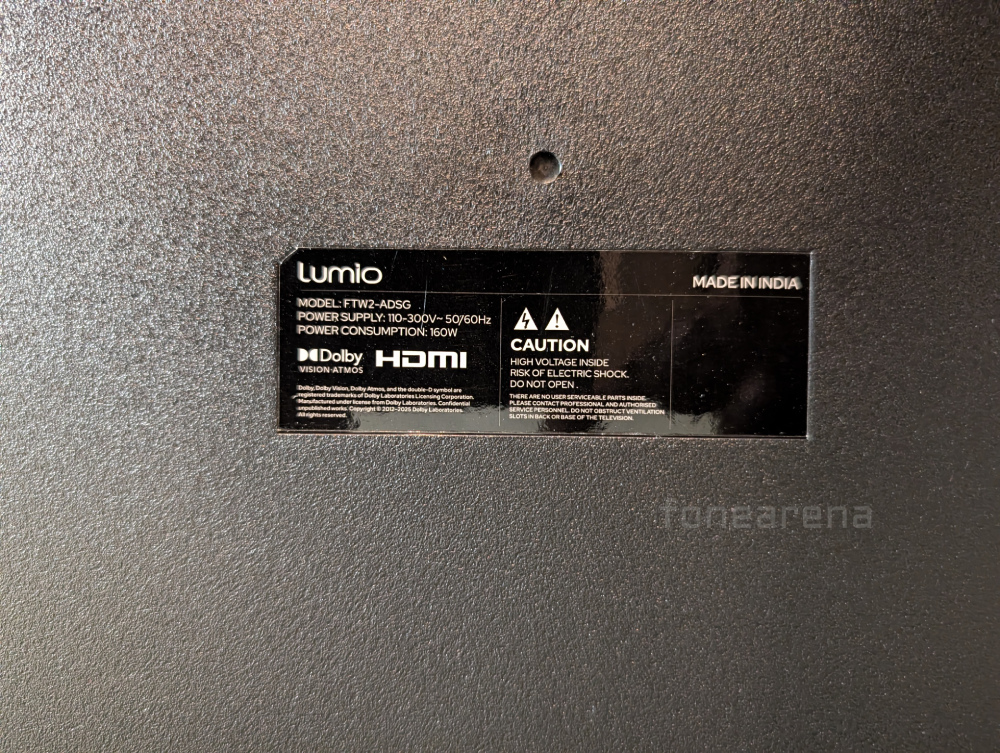
Editor’s take(Varun Krishnan)
One common concern with Android-based Smart TVs is performance degradation over time—something we’ve consistently observed during our testing at our in-house labs FoneLabs. For users facing this issue, we often suggest considering a dedicated streaming device like the NVIDIA Shield TV or Apple TV for a more consistent experience.
We decided to review the Lumio TV as we’ve been familiar with the team behind the brand from their previous roles in the consumer electronics space. Their expertise is well-established, and with Lumio, they’re aiming to make a mark in the TV segment and beyond in the near future. In my conversation with the team, it was clear that they’re fully aware of the challenges of entering a highly competitive and niche market. Rather than chasing scale from the outset, their focus is on meaningful innovation—specifically aimed at tech-savvy users and enthusiasts.
If you’re in the market for an affordable 4K TV, Lumio’s current lineup is worth a look. Their flagship model, the Vision 9, offers a noticeably more premium experience, though at a higher price point. With Amazon as their e-commerce partner and more home entertainment products on the way, Lumio is a brand worth watching.
Conclusion: A Refreshingly Fast and Premium Mid-Ranger
The Lumio Vision 7 50-inch QLED TV successfully delivers on its core promise of combating the sluggishness often found in mid-range Smart TVs. Its standout strengths are its exceptionally smooth and responsive performance, the premium feel of its design and build quality (especially considering the price), and the surprisingly good built-in audio clarity. The QLED panel offers a vibrant and sharp picture suitable for most viewers, and the well-designed remote enhances the daily user experience.
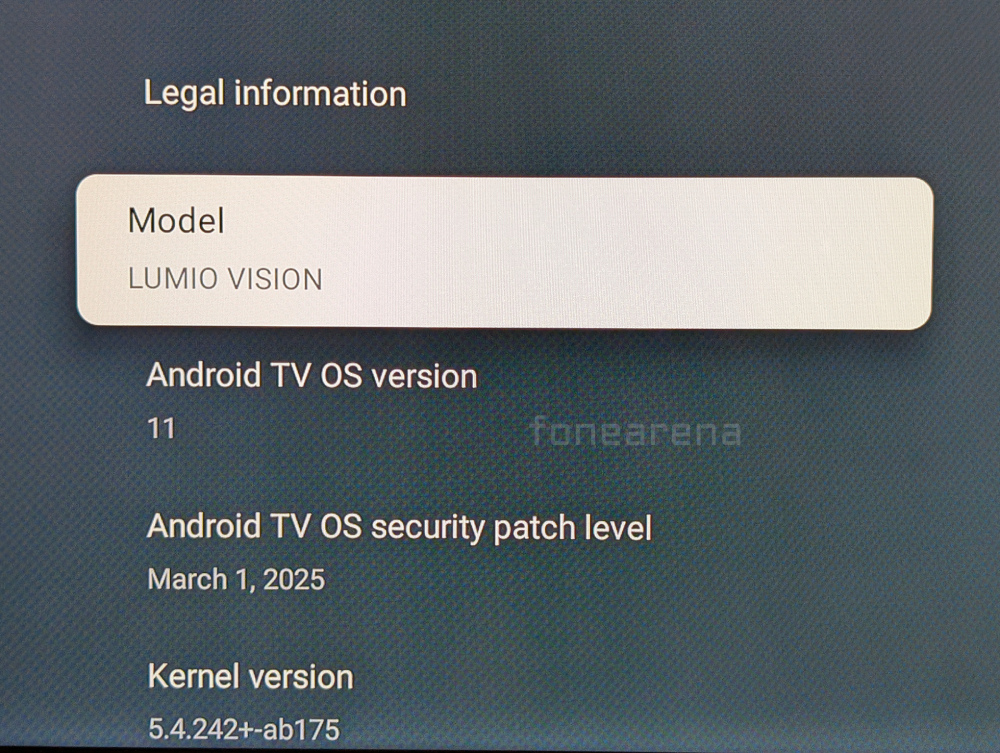
However, potential buyers must weigh these positives against clear limitations. The 60Hz panel restricts motion handling and gaming capabilities (no VRR/120Hz). As a standard QLED without local dimming, black levels and viewing angles are average, falling short of OLED/Mini-LED standards. The bass response from the speakers is weak, necessitating a soundbar for impactful audio.
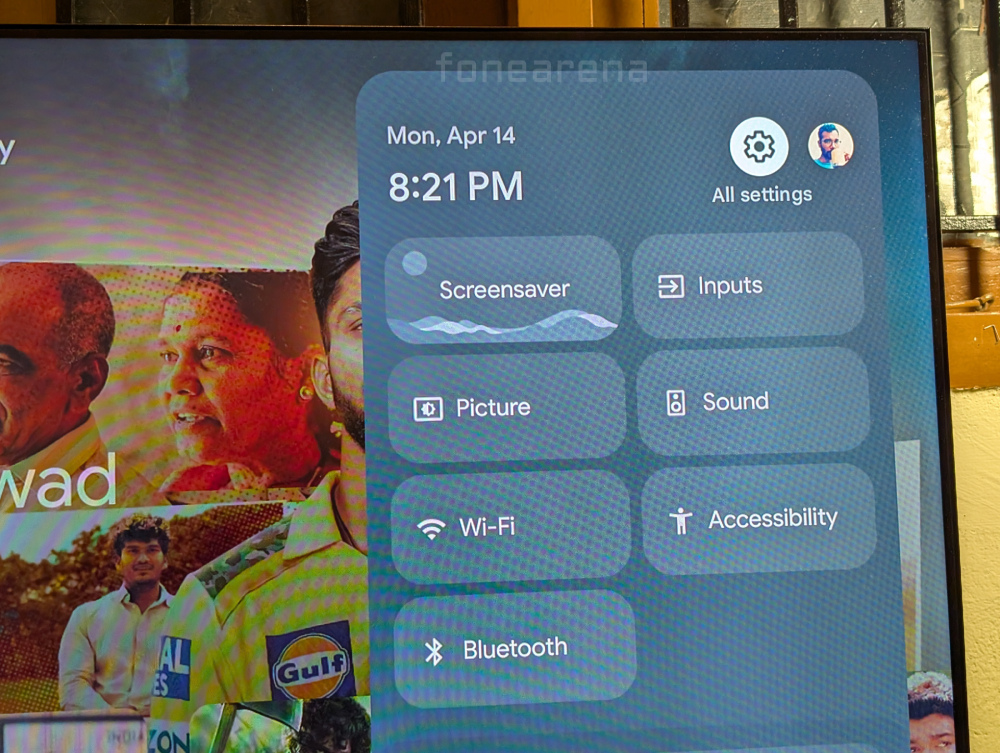
Who is it for? This TV is an excellent choice for users prioritizing a fast, fluid, user-friendly Smart TV interface above all else. If you’re tired of laggy menus and slow apps on other TVs in this price range, the Lumio Vision 7 will feel like a breath of fresh air. It’s also great for those who appreciate good design, solid build quality, clear dialogue, and a great remote. Casual gamers will appreciate the low input lag provided by ALLM.
Value Proposition: At ₹34,999, the Lumio Vision 7 offers compelling value by delivering a smooth performance and premium feel often associated with more expensive TVs. The trade-offs (60Hz panel, average blacks, weak bass) are arguably acceptable compromises for achieving this level of responsiveness and build quality at this price point.
Recommendation: Yes, the Lumio Vision 7 is recommended, especially for users frustrated with slow Smart TVs who value a smooth interface, good picture quality for general viewing, clear audio, and a premium design feel without breaking the bank. Just be aware of the 60Hz panel limitations for motion and gaming, and consider budgeting for a soundbar if impactful bass is important to you.
Pros:
- Exceptionally smooth and responsive Google TV performance
- Premium build quality and design feel for the price
- Minimal bezels and thoughtful design touches (e.g., visible ports)
- Bright, sharp, and vibrant QLED picture quality
- Good out-of-box color accuracy
- Effective 4K upscaling (DOPE Engine)
- Surprisingly clear, balanced, and loud built-in audio (DGS Tuning)
- Outstanding remote control design and button feel
- Effective voice control (Google Assistant)
- Good app compatibility and performance
- ALLM support for low-latency gaming
- 2 major Android version updates and quarterly security patches
Cons:
- 60Hz refresh rate limits motion handling and gaming (no VRR/120Hz)
- Viewing angles limited for contrast and color accuracy
- Black levels are not absolute (typical for non-local dimming QLED)
- Weak bass response from built-in speakers
- No dedicated Game Bar interface
- Glossy screen, though anti-reflective layer helps
